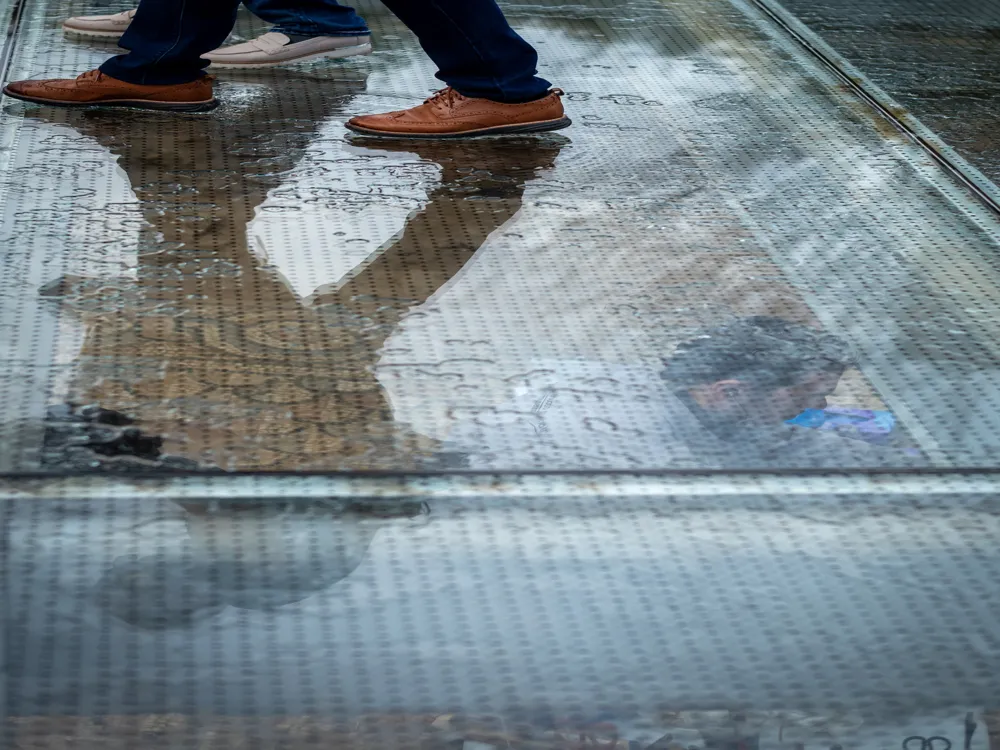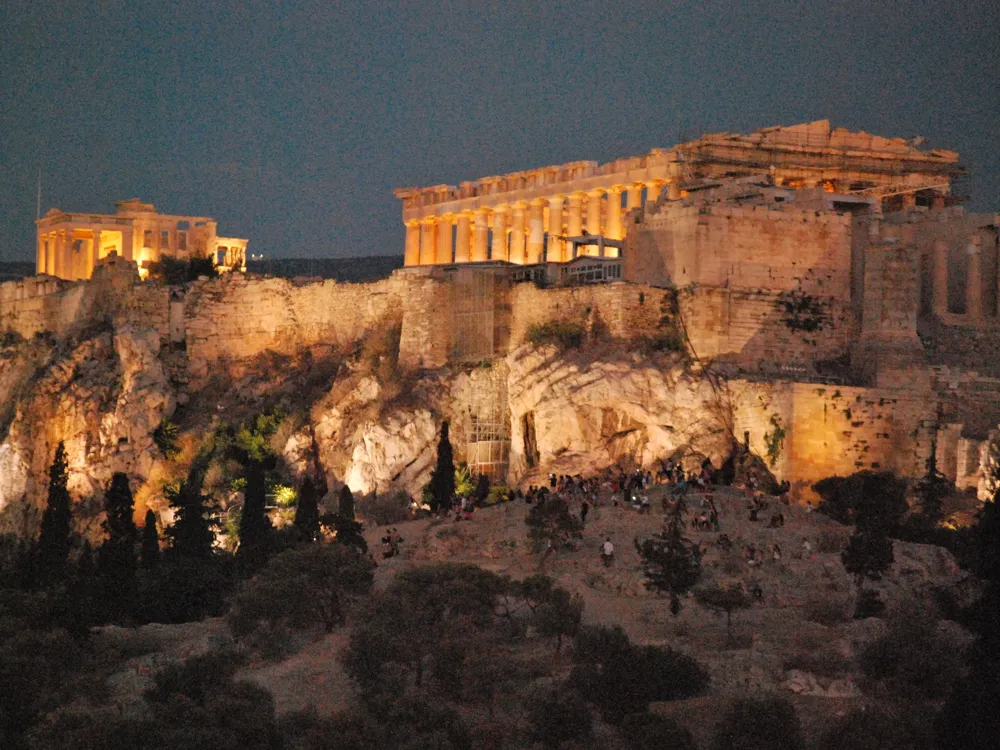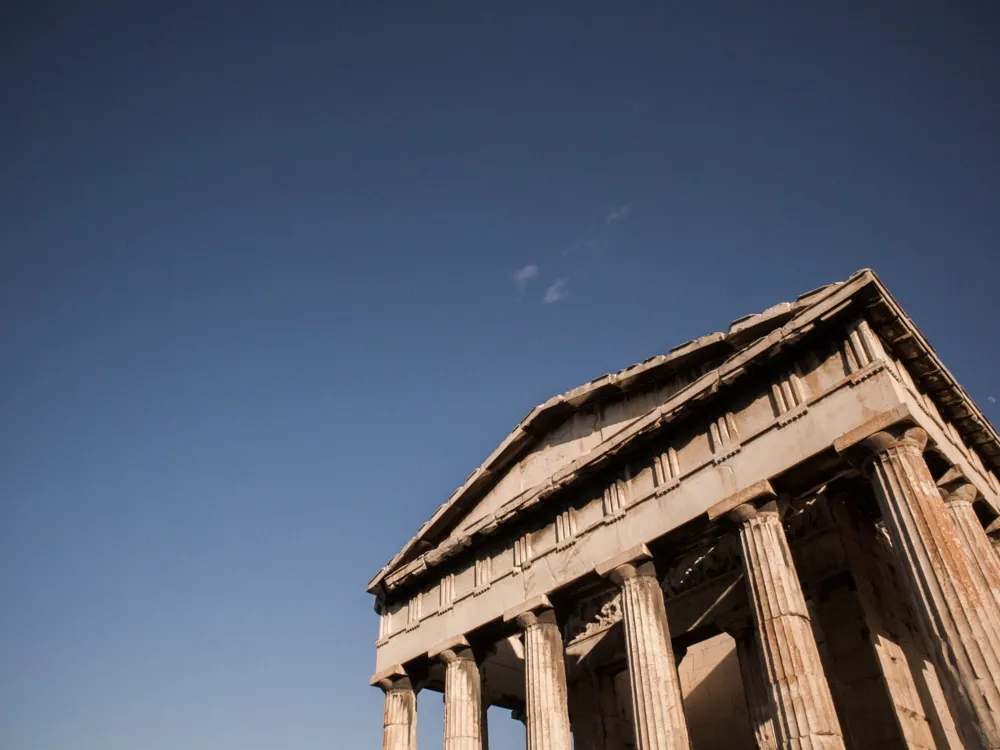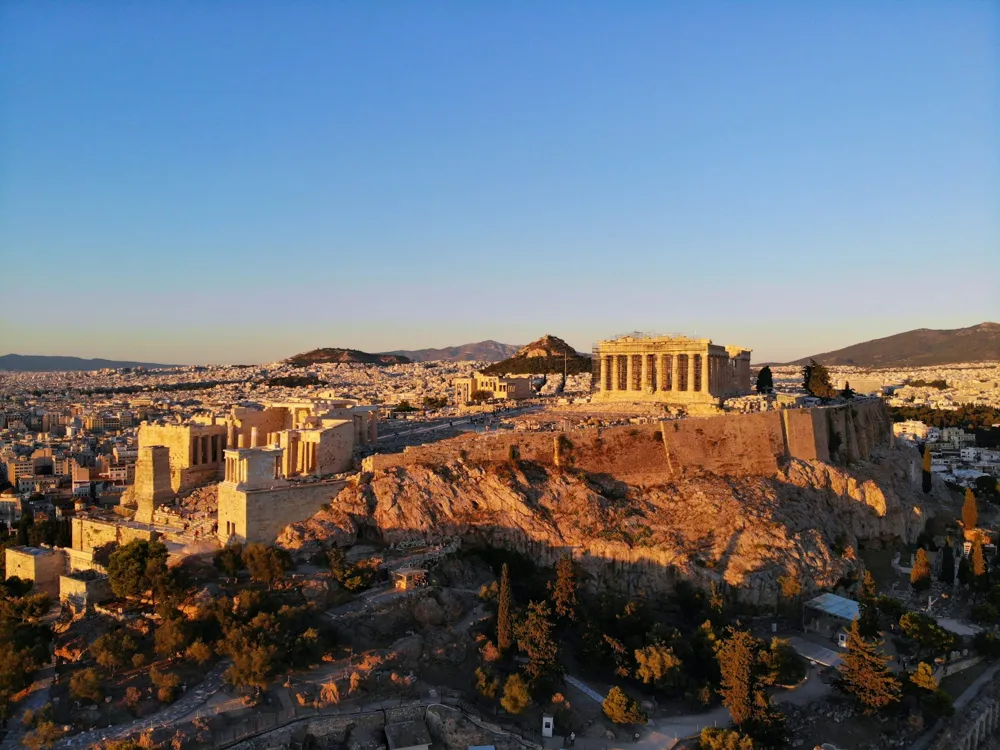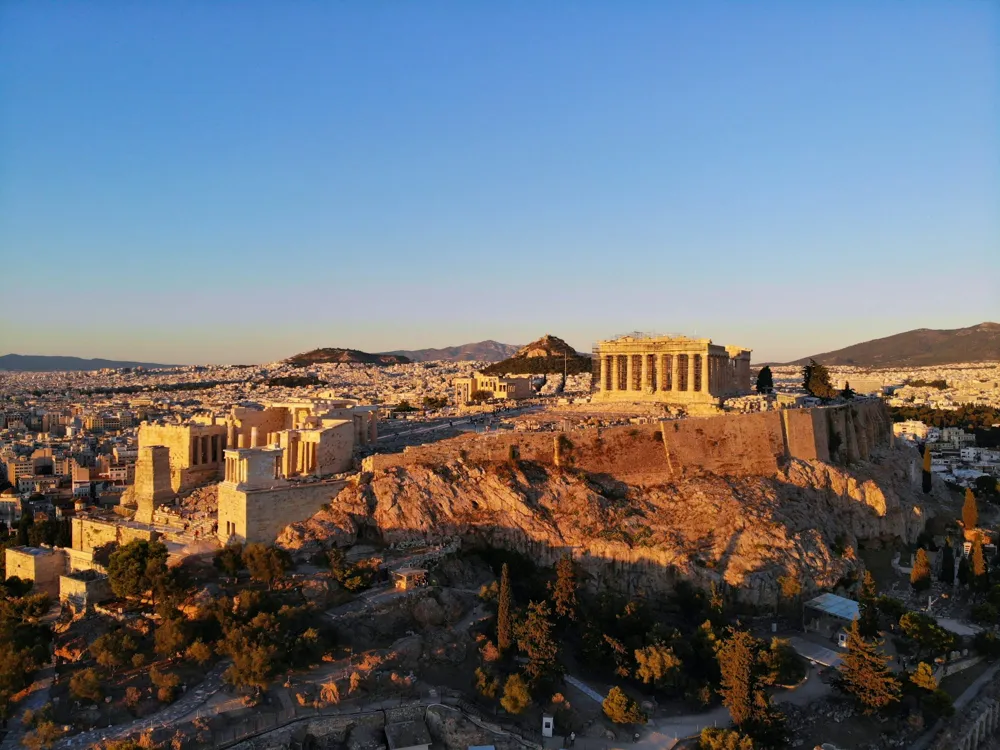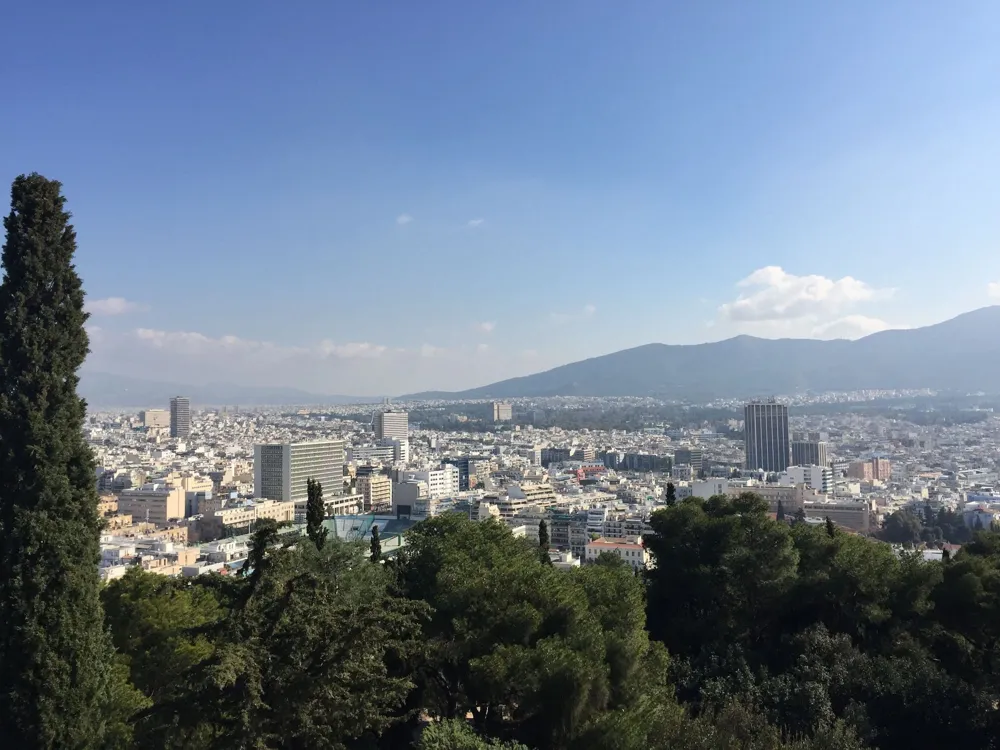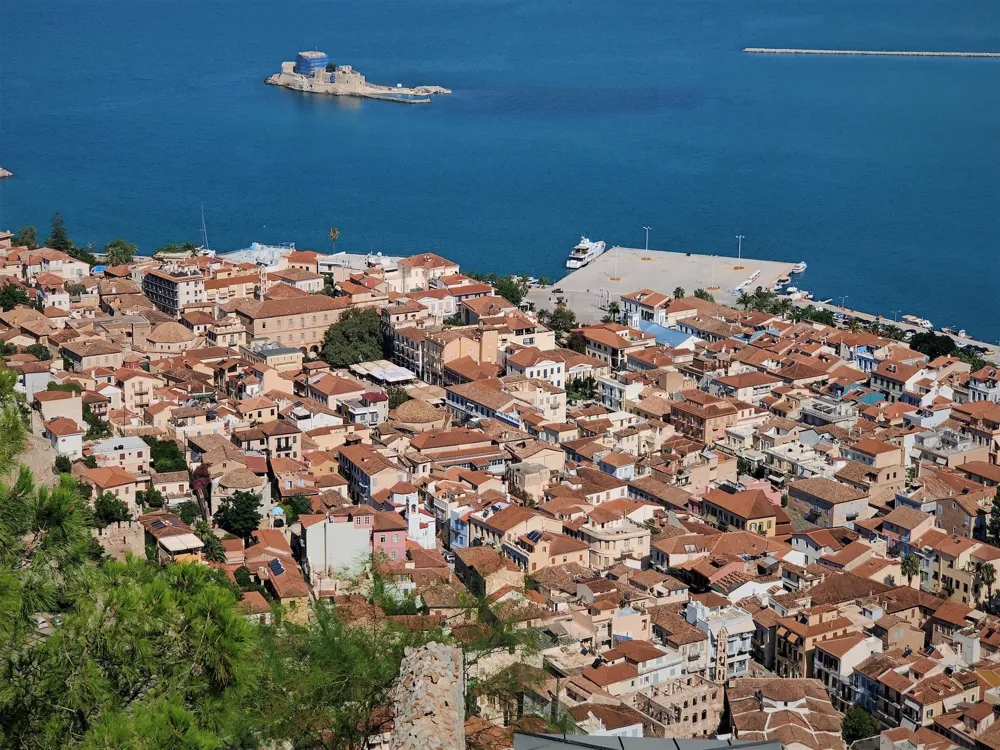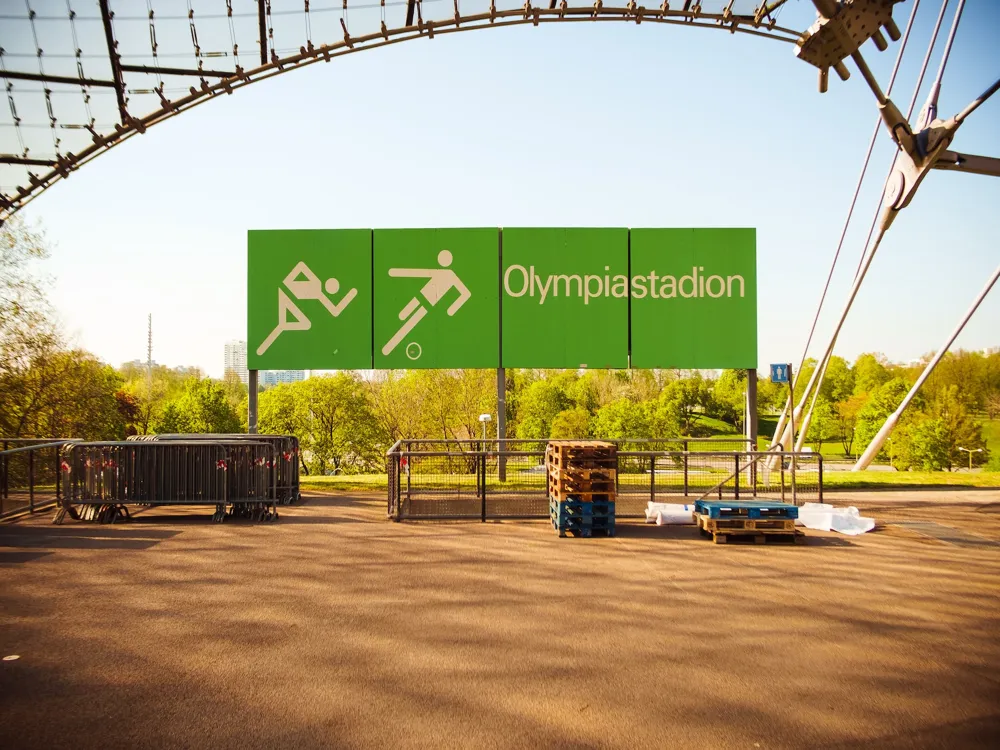The Propylaea serves as the magnificent entrance to the Acropolis in Athens, Greece. Constructed under the direction of Pericles, this grand gateway epitomizes the height of Athenian democracy and artistic achievement in the 5th century BCE. Its architectural splendor and historical significance make it a key monument in understanding ancient Greek culture and aesthetics. The architecture of the Propylaea is a testament to the skill and ingenuity of ancient Greek architects. It features a Doric colonnade exterior and an Ionic colonnade interior, showcasing a harmonious blend of architectural orders. The structure was designed by the architect Mnesicles, and its construction began in 437 BCE. Despite being unfinished, its monumental approach and precise symmetry offer insights into the advanced architectural techniques of the time. Visit early in the morning or late in the afternoon to avoid crowds and experience the site in quieter, more atmospheric conditions. The lighting during these times also provides excellent opportunities for photography. Wear comfortable shoes as you will be walking on uneven surfaces. Bring a hat, sunscreen, and water, especially during the summer months, to stay hydrated and protected from the sun. Remember that the Propylaea and the Acropolis are UNESCO World Heritage Sites. Please respect the ancient structures by not touching or climbing on them, and dispose of trash properly. The Propylaea is accessible via the main entrance to the Acropolis of Athens. The nearest metro station is Acropolis, on the red line (Line 2) of the Athens Metro. From the station, it is a short walk to the site's entrance. Taxis and guided tours are also available for those who prefer a direct route or more in-depth information during their visit. Read More:Overview of Propylaea of Athens
Architecture of Propylaea
Tips When Visiting Propylaea
Planning Your Visit
What to Bring
Respecting the Site
How To Reach Propylaea
Propylaea
Athens
₹ 25,800 onwards
View athens Packages
Weather :
Tags : Historical Site
Entry Fees : Adults: EUR 30
By paying an admission fee of EUR 30, you get access to the Acropolis as well as six other sites which you can visit within five days.
Planning a Trip? Ask Your Question
Athens Travel Packages
View All Packages For Athens
Top Hotel Collections for Athens

Private Pool

Luxury Hotels

5-Star Hotels

Pet Friendly
Top Hotels Near Athens
Other Top Ranking Places In Athens
View All Places To Visit In athens
View athens Packages
Weather :
Tags : Historical Site
Entry Fees : Adults: EUR 30
By paying an admission fee of EUR 30, you get access to the Acropolis as well as six other sites which you can visit within five days.
Planning a Trip? Ask Your Question
Athens Travel Packages
View All Packages For Athens
Top Hotel Collections for Athens

Private Pool

Luxury Hotels

5-Star Hotels

Pet Friendly







